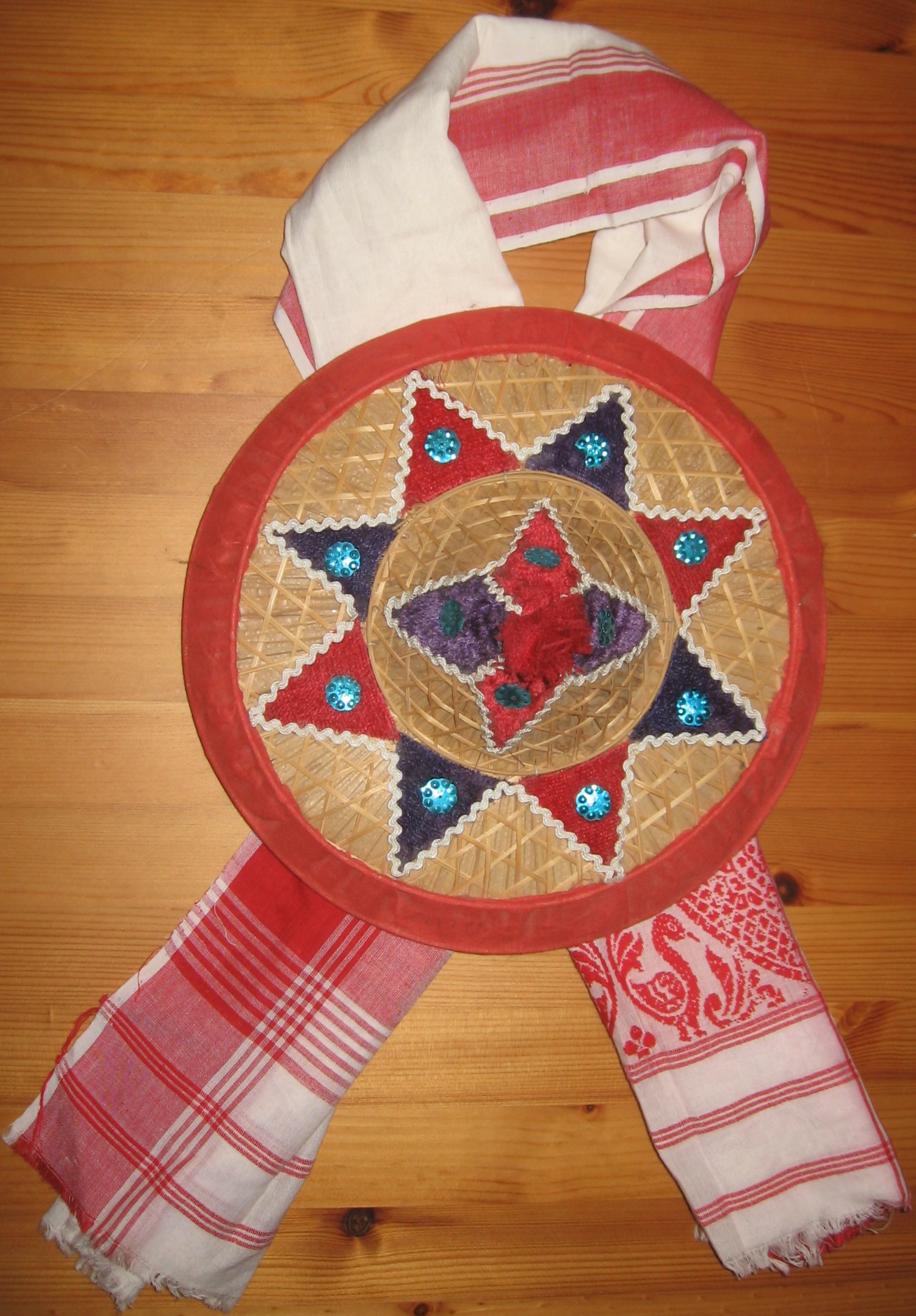News Highlights:
- A massive controversy has erupted in Assam over a gamosa, which has been weaved by blending the designs of traditional Assamese gamosa with Bengali Gamchas(hybrid gamosas).
- The Bangla Sahitya Sabha, Assam (BSSA) felicitated guests at a function with “hybrid gamosas”. The organisation issued an apology after a controversy erupted.
Key Takeaway:
The BSSA is a newly formed literary and cultural society with the aim of serving as a meeting point for Bengalis of Assam.
Key Issues:
- The organisers presented the Hybrid gamosa as a symbol of harmony between Assamese and Bangla.
- A large section of Assamese people has seen this as an insult to Assamese culture and a deliberate distortion of the uniqueness of Assamese gamosa.
- Gamosa, a woven cotton towel, is a symbol of pride for the Assamese community, which received the GI tag.
- Many are now claiming that the hybrid gamosa is a violation of the GI tag norms.
Assamese gamosa:
- About:
- The Gamosa or Gamusa is an article of significance for the indigenous people of Assam, India.
- It is generally a white rectangular piece of cloth with primarily a red border on three sides and red woven motifs on the fourth (in addition to red, other colours are also used).
- Although the cotton yarn is the most common material for making/weaving gamosas, there are special occasion ones made from Pat silk.
- Origin of the name
- The word ‘Gamocha’ is derived from the Assamese word ‘Ga’ (body) and ‘Mocha’ (wipe), which means a towel to wipe the body.
- The weavers use a traditional loom called the ‘Taat Xaal’ to weave the towel.
- Usage:
- It is used to cover the altar at the prayer hall or cover the scriptures. An object of reverence is never placed on the bare ground but always on a gamusa.
- It is used by the farmer, fisherman or hunter as a waistcloth (tongali) or a loincloth (Suriya) or Gamsa; a Bihu dancer wraps it around the head with a fluffy knot.
- It is hung around the neck at the prayer hall (naamghar) and was thrown over the shoulder in the past to signify social status.
- Guests are welcomed with the offering of a gamusa and Tamul (betel nut), and elders are offered gamusas during Bihu.
- Cultural Significance:
- Significantly, the gamusa is used equally by all, irrespective of religious and ethnic backgrounds.
- At par with gamusa, there are beautifully woven symbolic clothes with attractive graphic designs being used by different cultural sub-systems and ethnocultural groups as well.
- A Gamusa border with a traditional handwoven motif called goxa
- There were various other symbolic elements and designs traditionally in use, now only found in literature, art, sculpture, architecture, etc. or used for religious purposes (in particular occasions only). The typical designs of Assamese lions, dragons, flying lions, etc., were used for symbolising various purposes and occasions.
- Recognition:
- On December 13 of 2022, Gamosa of Assam received the Geographical Indication tag, which recognises its origin and unique characteristics.
- The GI tag ensures that the Gamocha is protected from imitations and helps to promote the local weavers and their traditional weaving techniques.
- The Assamese Gamocha has gained national and international recognition for its unique design and cultural significance.
What is Bengali Gamcha?
- About:
- Gamucha is a sort of traditional thin, coarse cotton plaid or turban fabric, sometimes with a checked design, found in east India, Bangladesh, as well as in eastern Terai of Nepal.
- It also became a bit popular in other cultures of India and now in what is known as Pakistan after the Indian partition, as well as various parts of South and Southeast Asia.
- Usage:
- It is used for drying the body after bathing or wiping sweat.
- It is often worn on one side of the shoulder.
- Its appearance varies from region to region, and it has been traditionally worn as a scarf by the men of Odisha which was mentioned in Odia Mahabharata by Sarala Dasa.
- Male villagers wear it as a dhoti.
- Children of tribal communities in Odisha wear gamucha until their adolescence after which they wear dhoti.
Pic Courtesy: The Indian Express
Content Source: Wikimedia commons



